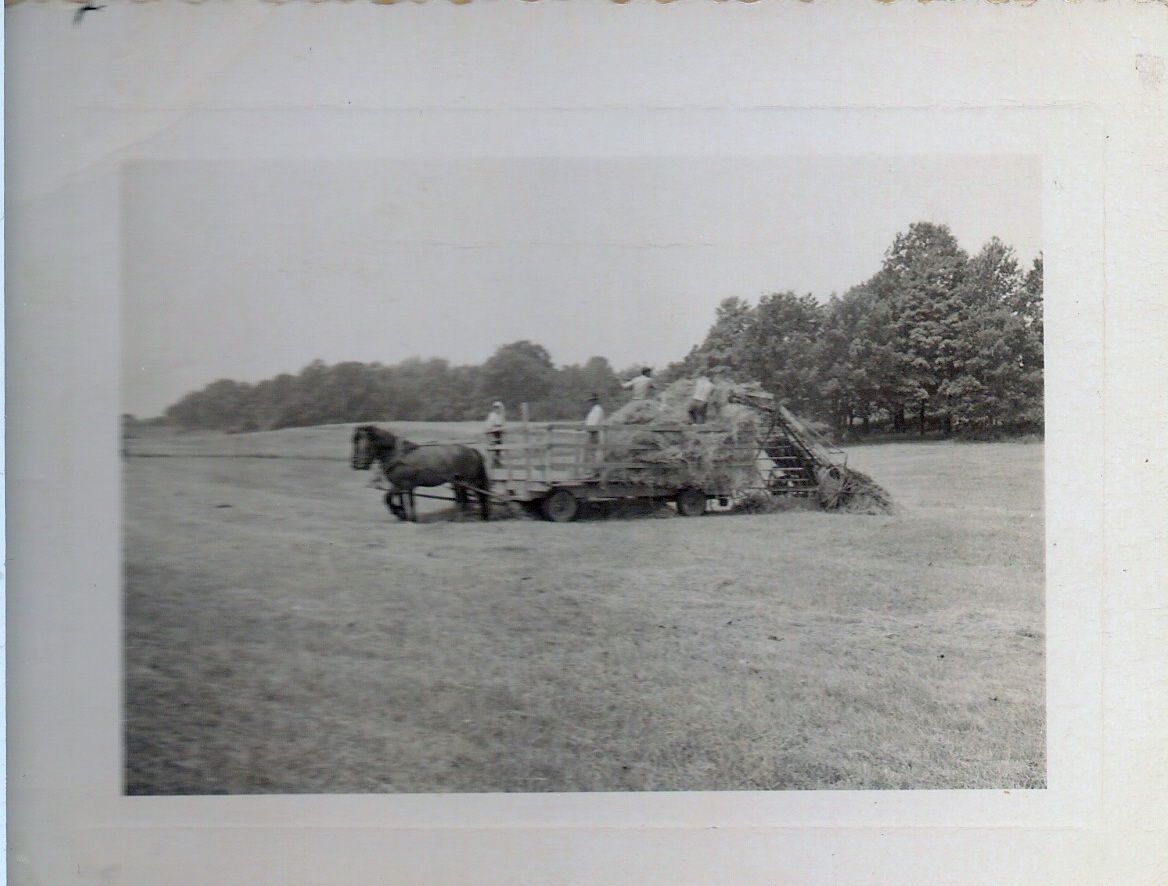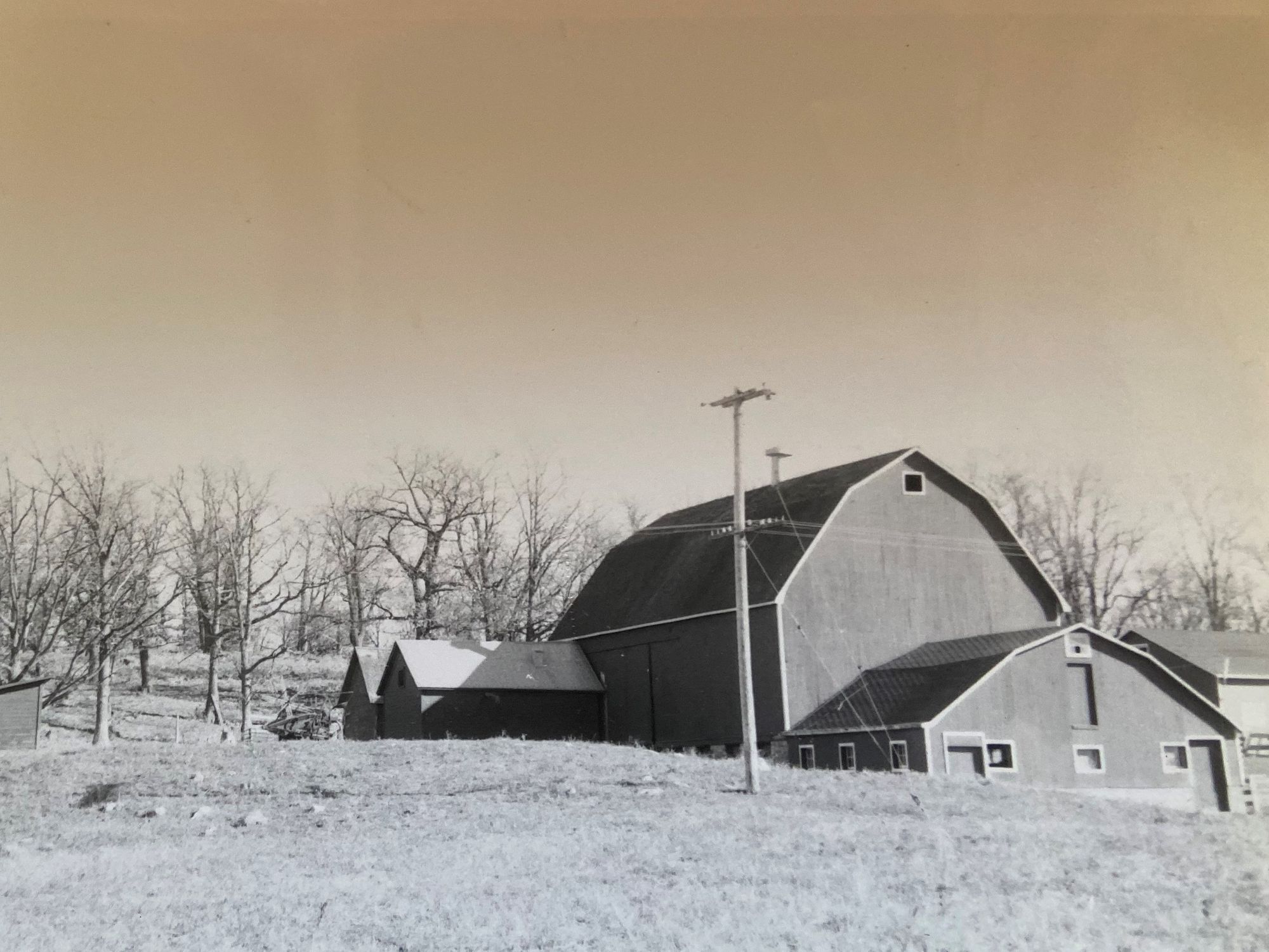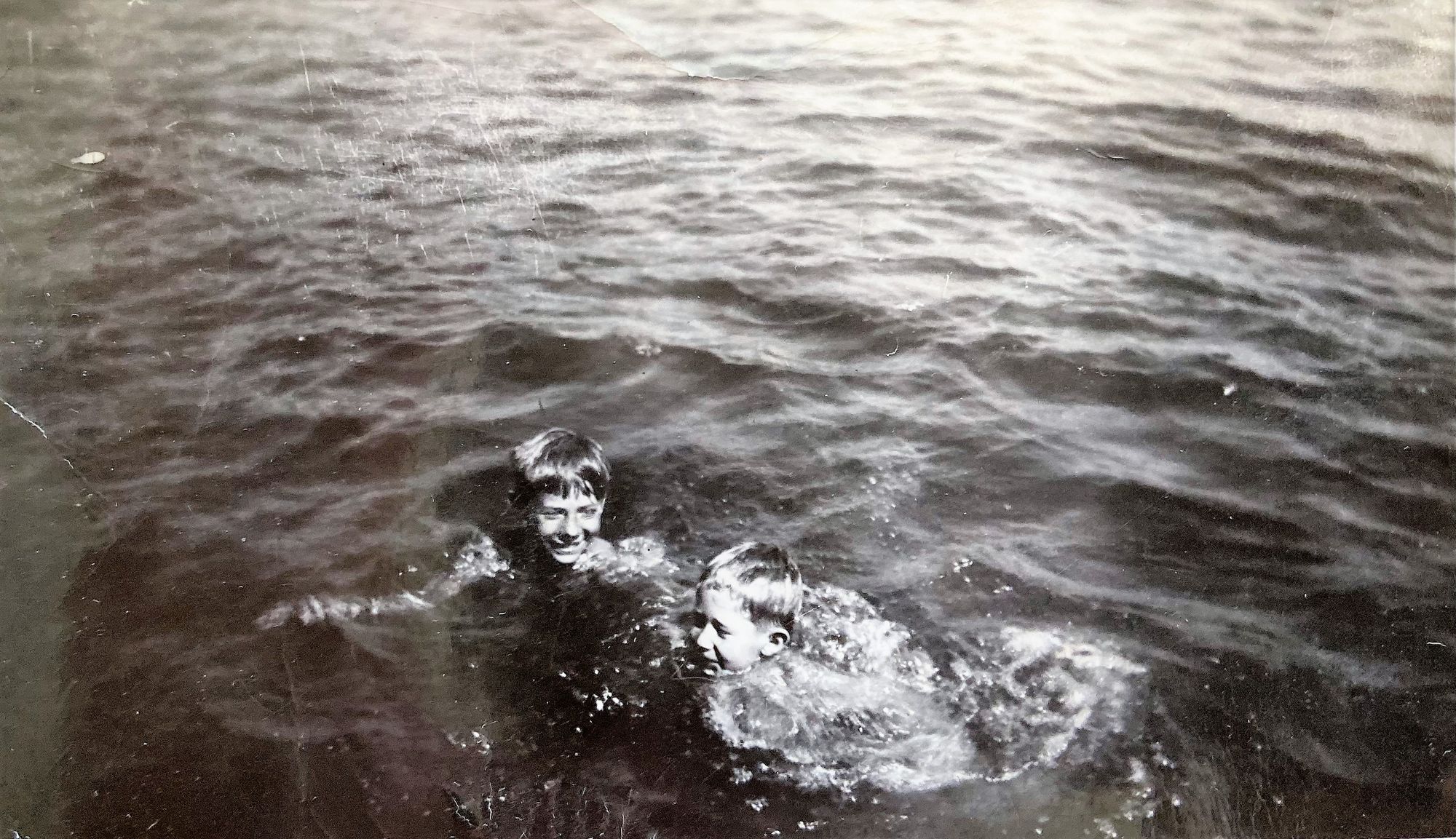Starting in late June and usually the entire month of July, daylight was consumed with the hay harvest on the farm. The fields that had been set aside for growing hay were cut and the hay was placed on wagons and hauled into the barn. The hay was eventually placed and stored in the barn in the hay loft or hay mound, to provide food for the coming winter for the cattle and horses. The hay harvest work was almost 24 hours a day for about 3 – 4 weeks each summer. Our family cut about 100 acres or more, each year.

First, the hay was cut using a mower or sickle bar machine that was pulled behind a tractor or two horses. The ground-drive mower moved a 6-foot bar of knives that cut the hay. The farmer would sit on the cast iron seat of the machine while it went along being pulled by horses or, if you were lucky, a tractor.
Once the hay was cut in the field, it had to dry in the summer sun. Once it was dried, the hay was then raked in to large, flat windrows, which were then picked up with a hay loader, a machine that was towed behind the two-horse wagon. Pulled by the horses, it pushed the hay from the windrow onto the hay wagon. From the wagon, one or two men or boys armed with pitch forks piled the hay carefully on the wagon for the trip to the barn. The goal was to pile the hay high on the wagon to make a very full load.
Once it arrived at the barn, a device called a hay fork, which was suspended from the top of the barn on a track, would come in to use. The two prongs of the hay fork would be lowered down to the hay on the wagon and inserted into the hay. The extended outward frame of the fork tines were moved outward impaling – hopefully – a large amount of next winter’s food for the farm animals.
Using a single rope, a horse usually pulled the hay up to the top of the barn on the track. A small 4- wheeled car sped the hay laden fork along the track at the right time, the trip rope that was pulling the hay was released from the fork, so all that was left to do was to spread the hay evenly on the hay mound.
This entire process might sound very simple, but in reality, the haying season was about three weeks of back-breaking, hard, work in the heat of the summer.

One summer as a young man, inside of our big red barn, where we put the hay, I remember carving with my knife, “July 4th 20 loads of hay”. At that time and place, I was very proud of our efforts and wonder if that carving is still there.
Swimming in the St. Lawrence River after a day of haying was such a blessing! I’ll never forget that feeling of diving into the cool, clear, refreshing water off our dock. The River was never was too cold for us and it felt invigorating!

My brother, Milton, and I would often take a break from our hay field to help our uncle, Aaron Cummings, with his haying. It was a fun time, he was always grateful for the help, and we enjoyed helping a great man. His equipment was in shambles though, broken boards in the hay wagon, the front ladder was just two poles tied together with rope. Very different from the equipment we knew from our farm. Lunch with Aunt Mildred (my mother’s sister) was always excellent, served in the kitchen, and we knew better than to go into the living room, which was really more like a museum.
After the haying season, we had a brief time to just enjoy the summer and life on the island until mid-August, when the grain harvest would begin. That’s another story to come!
By Manley L. Rusho
Manley Rusho was born on Grindstone Island nine+ decades ago. Last year, in 2021, Manley started sharing his memories with TI Life. (Manley Rusho articles) This Editor and his many friends wish him continued good health and we thank him, most sincerely, for sharing - as the life and times on Grindstone Island are special and should never be forgotten.
Editor's Note: Who doesn't remember driving in a car in any decade and seeing rows of hay drying in the fields. Somehow though, Manley you have captured what it was like in the 1940s and made us smile and nod in agreement that your comment is perfect: "After the haying season, we had a brief time to just enjoy the summer and life on the island until mid-August, when the grain harvest would begin." Today it is not the grain harvest, but rather mid-August signals the appearance of "school supplies" highlighted in all stores - another sign that the season will draw to a close all too soon.

Posted in: Volume 17, Issue 8, August 2022, History, People, Places, Nature
Please click here if you are unable to post your comment.
